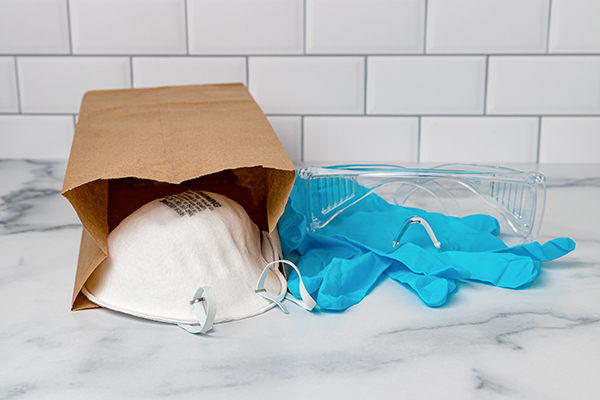Don’t Turn a Blind Eye to Your Food Defense Practices
Late last week, as I mindlessly scrolled through Twitter, I ran across a Tweet suggesting the #IceCreamChallenge from summer 2019 was the real cause of the Coronavirus spread. Of course, the Tweet was made tongue in cheek, but it did cause me to reflect on that challenge, which had a short life on social media in the summer of 2019.
Please do not confuse the ice cream challenge with the ice bucket challenge of 2014, which raised over $220 million for Amyotrophic Lateral Sclerosis (ALS), the disease often referred to as Lou Gehrig’s disease. Unlike the ice bucket challenge, the ice cream challenge had no positive impact on our society, unless you count changing the way some Americans bought ice cream as positive. The video that started the social media blitz showed a teenage girl in a large supermarket chain removing the lid to a container of ice cream in the freezer section, licking it, and putting it back on the shelf. Of course, after this went viral, copycats abounded.
While I am certainly not hoping to kick off the 2021 version of the ice cream challenge, my thoughts quickly turned to food defense and protecting the food in foodservice operations. Do you have a solid food defense plan in place for your operation? Often, the answer is no when it comes to retail foodservice operations.
As managers, we spend a great deal of time thinking about the inadvertent contamination of our food supply – biological, physical, and chemical contaminants – the things we learn about in a food safety class. We have proactive systems, such as HACCP, to help protect the safety of the food we serve. We forget about those who seek to intentionally contaminate the food supply. Thus, it is important to develop a food defense or food bioterrorism plan.
While most food defense plans focus on possible terrorist activities, don’t forget to consider all possibilities when developing your plan– including simple pranks…which may not have serious implications for food safety but can damage your brand reputation and image.
[/vc_column_text][vc_separator][/vc_column][/vc_row][vc_row][vc_column][vc_column_text]If you think this will not happen to you, I hope you are correct. But there is a reason why the Department of Homeland Security and other government agencies have identified the food industry as a potential target for these types of acts. Just yesterday, news broke of a cyber-attack on the world’s largest meat supplier. Not only could an attack on our food supply sicken many Americans, but it could have a devastating impact on your individual operation and our overall economy.For these reasons, I would recommend having plans in place to protect yourself from an intentional food contamination incident. We’ve seen these issues in self-service restaurants, grocery stores, and schools.
While most food defense plans focus on possible terrorist activities, do not forget to consider all possibilities when developing your plan– including simple pranks, like the ice cream challenge, which can quickly spread via social media. While these pranks may not have serious implications for food safety, they certainly can damage your brand reputation and image.
It can be difficult to come up with methods to protect your food supply from all possible attacks, but start with the basics and make sure you have the foundation in place to protect your food supply. A solid food defense plan should be developed just as you have developed your HACCP plan, in coordination with your key staff and managers. Walk through your operation, identify your vulnerabilities, develop action steps to mitigate these issues, and develop plans for on-going monitoring and corrective actions. While details are important, do not get overwhelmed because you are afraid you won’t include every possibility in your plan. Let me put your fears at ease – you won’t! You will miss something, you will forget to include a vulnerability that you will realize five years from now, it is inevitable – so accept it now. But simply taking the first step and starting your plan will help you develop action plans and corrective actions for other vulnerabilities that come up later.
If you are just getting started, in my second blog this month I will give you some resources to get started on your plan. If you already have a plan in place, these resources will help you improve upon your plan. Risk Nothing.










